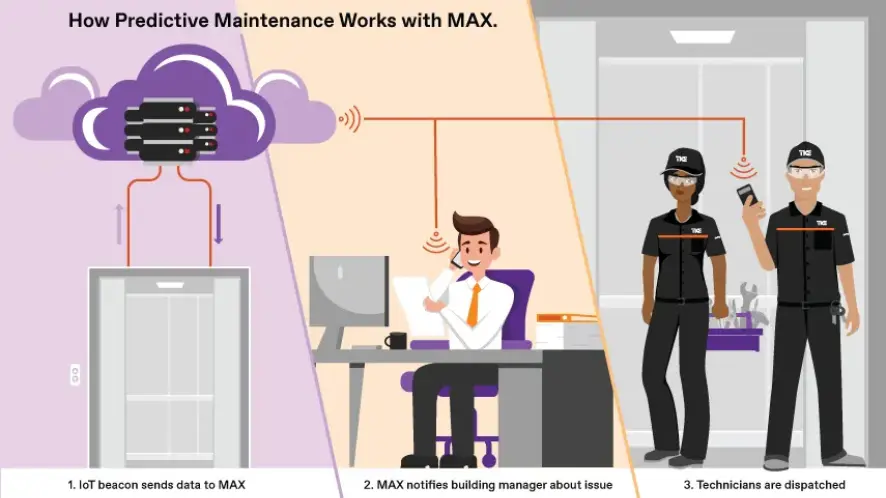Cloud-based Predictive Maintenance Maximizes Uptime
How IoT Has Revolutionized the Elevator Industry
Whether it’s the beginning of a bright, new morning or the end of a long day at the office, the last thing that anyone wants to see is that dreaded “Out of Order” sign on their elevator. We have all been there and felt that inevitable frustration. That’s why it’s crucial that every elevator is serviced frequently, but that can be easier said than done.
Most building owners and managers are responsible for numerous elevators, and it’s tricky to find time to monitor each one individually. So, how can the elevator industry relieve this issue to ensure that fewer tenants and workers have to face that “Out of Order” sign?
The 2021 TK Elevator Index Report has laid out trends and insights into what the future of vertical transportation holds. Taking years of data from over 86,000 elevators across North America, the TKE Index Report provides accurate and transparent insight into the continent’s elevator trips.
By analyzing and studying this data, it’s becoming simpler to understand what it is that tenants want and how to suit their needs as we work towards new technology in uncertain times.
Cloud-based Predictive Maintenance Maximizes Uptime
One of the major trends that was predicted to have a significant impact in the future is that of cloud-based predictive maintenance through IoT systems. In order to see less of that “Out of Order” sign, we must adopt new technology that will help us to render an issue obsolete before it can even present itself.
But how exactly does this system work, and how has it revolutionized the elevator industry?

With the Internet of Things (IoT) network, beacons are attached to each elevator and send information to the cloud network at all times. This allows us to check in on how an elevator is running and the trips it’s taking. If a door is taking too long to open—we will know. By comparing the data from the other elevators taken, we can predict when an elevator is reaching a point where it may need servicing. Our cloud-based predictive maintenance network box, MAX, contains an AI that is constantly learning patterns and statuses of the different elevators in a building. When an issue is detected, MAX automatically notifies building manager so that it can be resolved.
From there, the building manager only has to press a button to let a technician know about this impairment. A technician will then be able to check the elevator and perform any servicing necessary to ensure that it doesn’t become a serious problem later.
This 2021 TKE Index Report trend predicts that PdM, or predictive maintenance, will maximize elevator uptime. Having uptime increased will lower tenant complaints and help with foot traffic flow in a building.
IoT will continue to change the way that building managers work as they will know exactly how their elevators are doing at all times without having to constantly check on each one. Keeping an eye on all elevators in every building is of the utmost importance.
Elevators are the backbone of any building and affect everything that happens inside—especially the flow of foot traffic. Technology like MAX that utilizes IoT and AI will become common in the future in order to keep these backbones strong and running efficiently throughout the day.
Would you like to read more about the trends predicted in the 2021 TKE Index Report? Click here to download a copy and learn about elevator activity in your region
 United States
United States

